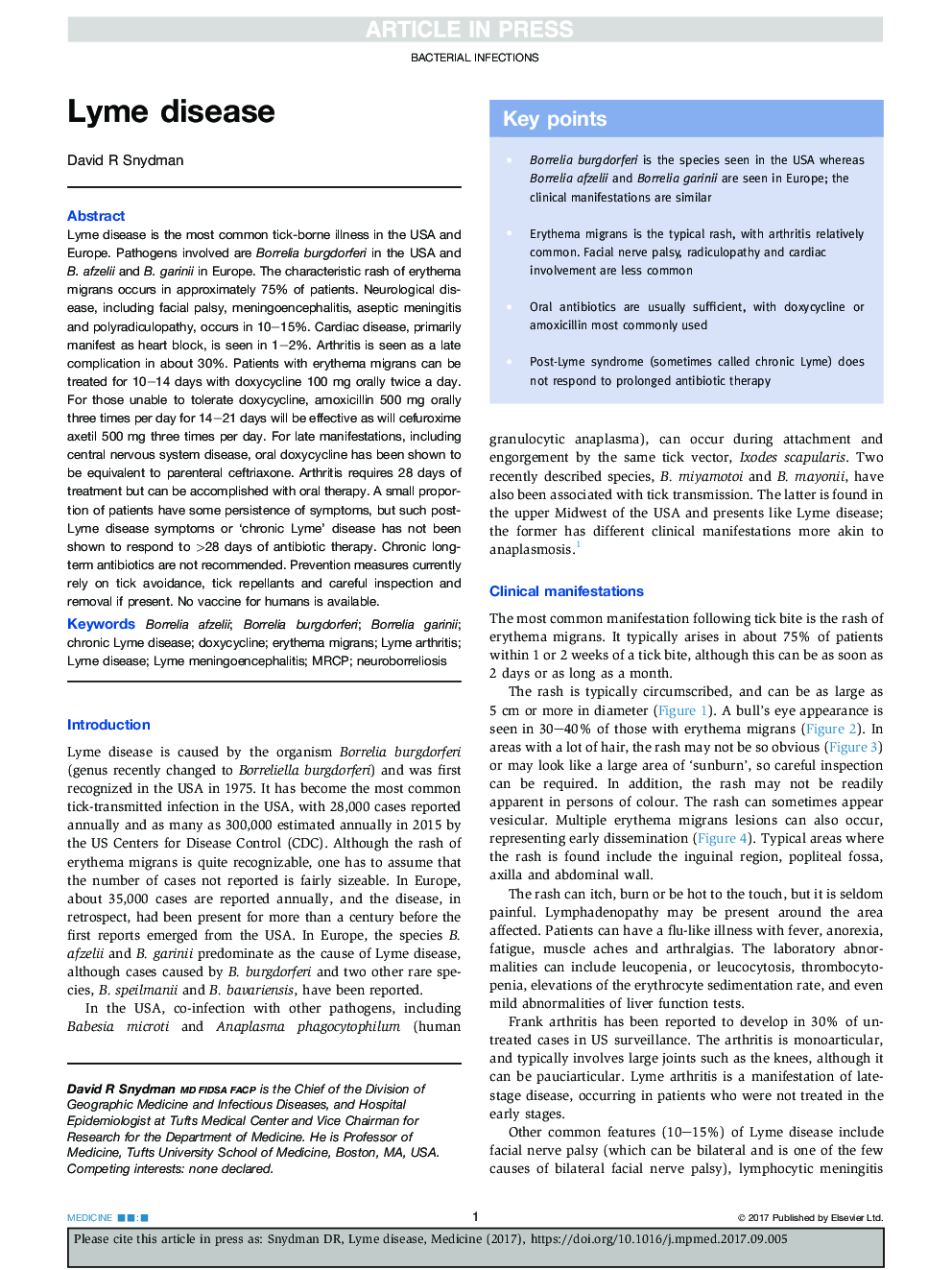| Article ID | Journal | Published Year | Pages | File Type |
|---|---|---|---|---|
| 8764132 | Medicine | 2017 | 4 Pages |
Abstract
Lyme disease is the most common tick-borne illness in the USA and Europe. Pathogens involved are Borrelia burgdorferi in the USA and B. afzelii and B. garinii in Europe. The characteristic rash of erythema migrans occurs in approximately 75% of patients. Neurological disease, including facial palsy, meningoencephalitis, aseptic meningitis and polyradiculopathy, occurs in 10-15%. Cardiac disease, primarily manifest as heart block, is seen in 1-2%. Arthritis is seen as a late complication in about 30%. Patients with erythema migrans can be treated for 10-14 days with doxycycline 100 mg orally twice a day. For those unable to tolerate doxycycline, amoxicillin 500 mg orally three times per day for 14-21 days will be effective as will cefuroxime axetil 500 mg three times per day. For late manifestations, including central nervous system disease, oral doxycycline has been shown to be equivalent to parenteral ceftriaxone. Arthritis requires 28 days of treatment but can be accomplished with oral therapy. A small proportion of patients have some persistence of symptoms, but such post-Lyme disease symptoms or 'chronic Lyme' disease has not been shown to respond to >28 days of antibiotic therapy. Chronic long-term antibiotics are not recommended. Prevention measures currently rely on tick avoidance, tick repellants and careful inspection and removal if present. No vaccine for humans is available.
Keywords
Related Topics
Health Sciences
Medicine and Dentistry
Medicine and Dentistry (General)
Authors
David R. Snydman,
